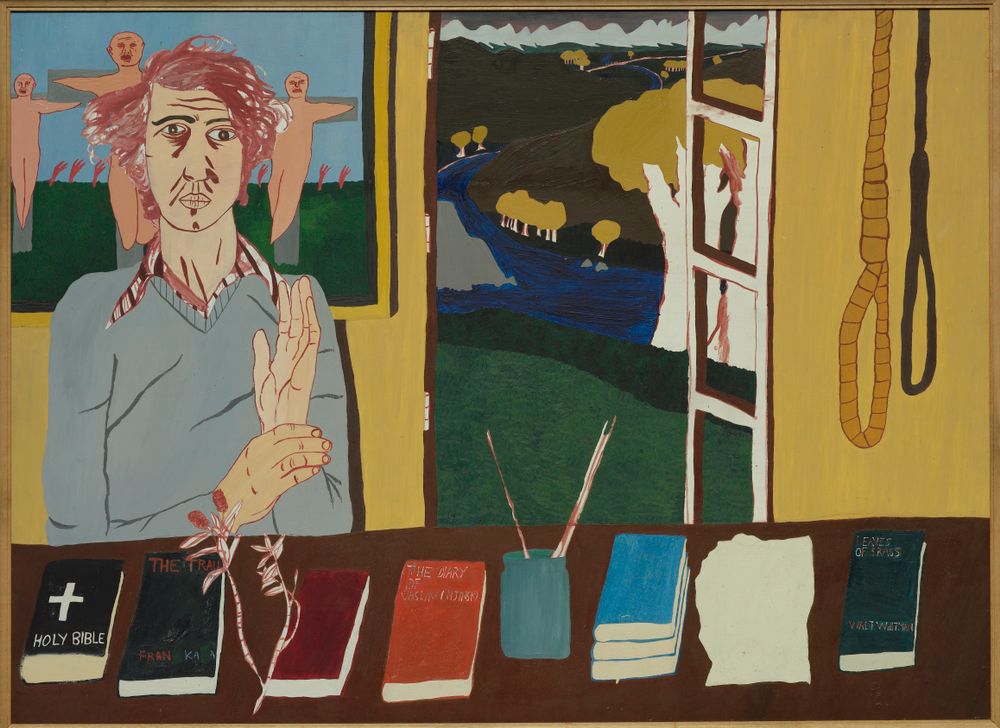CURATOR Justin Paton ORGANISER Dunedin Public Art Gallery OTHER VENUES Dunedin Public Art Gallery, 2 October 2004–13 February 2005; Christchurch Art Gallery, 24 March–25 June 2006 PUBLICATION essay Justin Paton
Painter Jeffrey Harris never went to art school—he's self-taught. In 1969, he moves to Dunedin, where he begins painting full time in 1970. There, he's mentored by two older painters, Ralph Hotere (who moved to Dunedin to be the 1969 Hodgkins Fellow) and Michael Smither (who followed him as the 1970 Fellow).
Harris’ early works include crucifixions, family groups, portraits, and self-portraits. Some are based on old family photos. In style, they range from impossibly fine-detailed pencil drawings and jewel-like ‘icons’ to smudgy pastels and big, brash, painterly paintings. Rooted in art history, Harris' works show his indebtedness to the Old Masters and to modern-period expressionists, including Francis Bacon. They also recall canonical local figures, like Colin McCahon, Rita Angus, and Smither, affirming a New Zealand painting idiom with strong Christian undertones.
Harris scrambles elements of (personal) autobiography and (impersonal) allegory. He pictures a world where signs and symbols swamp us, yet seem to have lost their meanings, suggesting some existential crisis. He is often cast as a tormented expressionist, but Harris' work is more complex. Rather than expressive, his style is often at odds with his subject. For instance, a heavy scene may be presented in a pretty, decorative manner, or the emotional centre of an image may be elided.
In the 1980s, Harris’s work—and the understanding of it—shifts with the influence of postmodernism and neo-expressionism. In the late 1980s, he moves to Australia, bringing further changes to his work, as he absorbs elements of Australian art, seeking to become an Australian artist. In 2000, he returns to New Zealand.
Harris is a complex and formally inventive artist and this long overdue survey show unpacks many of his work’s twists and turns. In the Listener, an enthusiastic David Eggleton raves: ‘Two years in the assembling, this exhibition stacks up as a ferocious display of art that is neither de-fanged nor de-clawed; rather it roars like the Metro-Goldwyn-Mayer lion.’






























































